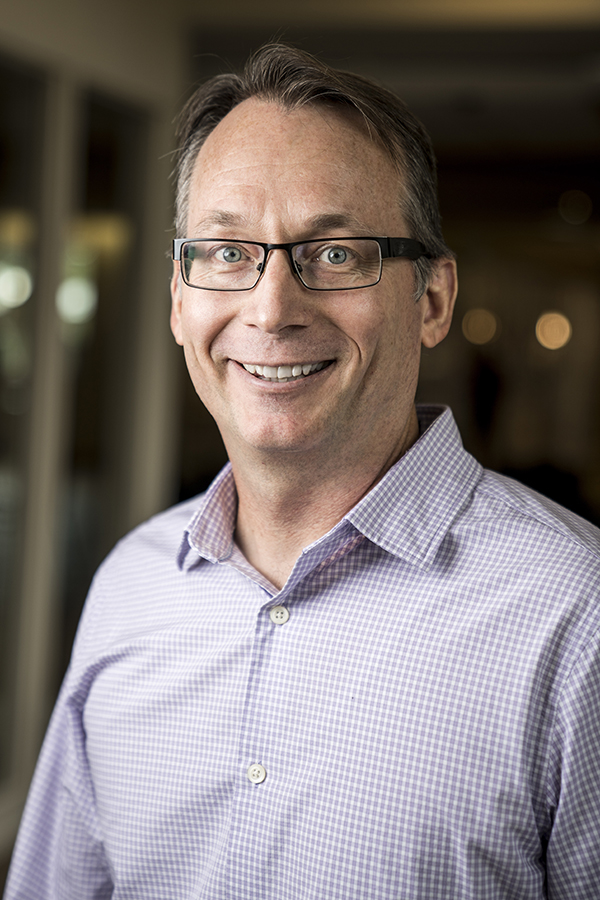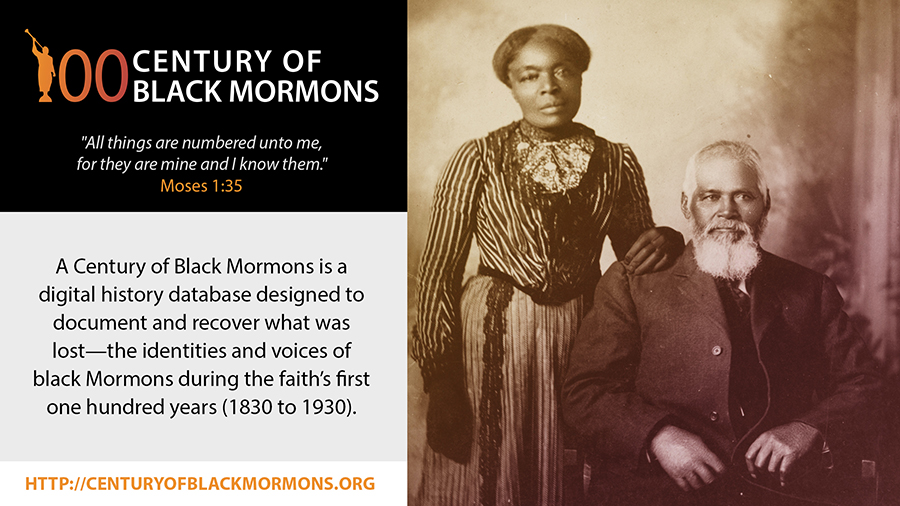“Century of Black Mormons” documents and recovers
identities of black Mormons
New database at University of Utah sheds light on early history of black members in The Church of Jesus Christ of Latter-day Saints.
_________________________________________________________________________________________________________________________________________________________
 June 30, 2018– Paul Reeve, professor of history at the University of Utah, and the J. Willard Marriott Library have collaborated to develop a public history project,“Century of Black Mormons,” a databasethat illuminates the history of black membersin The Church of Jesus Christ of Latter-day Saints.The databasewas unveiled this morningat “Black, White, and Mormon II: A Conference on Race in the LDS Church Since the 1978
Revelation,” hosted bythe U’s Tanner Humanities Center.
June 30, 2018– Paul Reeve, professor of history at the University of Utah, and the J. Willard Marriott Library have collaborated to develop a public history project,“Century of Black Mormons,” a databasethat illuminates the history of black membersin The Church of Jesus Christ of Latter-day Saints.The databasewas unveiled this morningat “Black, White, and Mormon II: A Conference on Race in the LDS Church Since the 1978
Revelation,” hosted bythe U’s Tanner Humanities Center.
A digital history database, “Century of Black Mormons” documents and recovers identities and voices of black Mormons during the faiths’ first 100 years (1830-1930). It contains digitized versions of original documents, photographs, a timeline and biographical essays telling the stories of black Mormons. The archive currently contains about 40 biographies and more than 200 will be added.
One of the first peopleto join the Mormon church was Elijah Able, a well-documented black priesthood holder in the 19thcentury. Able was baptized at the age of 22 in 1832 and twice more later in his life – in 1853 with his wife and in 1857 with his son. He was uniquely ordained to the LDS priesthood in 1836 as an elder and became a member of the third Quorum of the Seventy that same year. Able received his initial temple rituals at Kirtland, Ohio, and participated in baptisms
for the dead at Nauvoo, Illinois, but was never allowed to enter LDS temples in Utah in order to participate in other rituals orto be sealed to his wife. He died at the age of 74 after returning from a third proselyting mission.
The archive contains records of many of the events in Able’s life as well as many others. The documents in the database reference back to even the earliest dates of Mormon history to the first black person
to affiliate in any way with the church known only as “Black Pete.”
“The beauty of the database is the primary source documents – now available to the public to explore and make meaning for themselves,” said Reeve, the first Simmons Mormon Studies Professor in the U’s College of Humanities.“They highlight the lives of Black Saints who are well loved, such as Elijah Able and Jane Manning James, but also include so many more. I think visitors to the database will be surprised at the previously unknown stories they
find as well as the diversity of geographic locations where Black Saints converted,” said Reeve.
 A few examples include:
A few examples include:
- Elijah Banks, who was born in Tennessee in 1855 to a father he could only identify as “a colored slave.” He converted to Mormonism in Minneapolisin 1899 and taught Sunday school.
- Julia Miller Lamb was a former slave who bore 14 children and was married for more than60 years. She was baptized in 1898 in Union, North Carolina, when she was in her mid-70s.
- Paul Thomas Harris was a convert from Johannesburgwho loved to feed the missionaries.
- Freda Lucretia Magee Beaulieuconverted in 1909 at Tylertown, Mississippi, and waited 69 years before she was allowed to enter an LDS temple.
- Daniel Bankhead Freemanwas baptized in 1865, in South Cottonwood, Utah, around the age of 11. He was identified in his baptismal record only as “Daniel of the colored race.”
He died in Corinne, Utah, after being kicked by a horse.
“I hope the information in the database will help scholars of religion and lay people
alike begin to understand what it meant to be twice marginalized—a member of a minority race within a suspect minority religion,” Reeve said.
The databasewas produced under the direction of Reevewith numerous partners including the J. Willard Marriott Library, the LDS church’s Church History Library, the University of Utah Department of History and several scholars and community members.
Both the Marriott Library’s Digital Library Services and Graphic Design departments
were involved in building “Century of Black Mormons.”
“We are thrilled to have been a part of producing this important project,” saidAlberta Comer, dean of the Marriott Library and university librarian. “It is absolutely essential that everyone have access to these storiesas they help us understand and address complex issues.”
The “Century of Black Mormons” can be accessed here. Individuals who have documents, photographs or other supporting evidence on individuals in the database can contact the Marriott Library at centuryofblckmormons@gmail.com.

